This post (and the one that follows) has been a long time coming and feels appropriate somehow because I am about to start my last week working as an auxiliar de conversación, or English teaching assistant. I have worked at the same public school in the center of Madrid for the last two years.
I joined the auxiliar program the first year that the Madrid government opened it up to Americans and Canadians. A Spanish professor I had during my last semester of college had sent us an email with a bare-minimum description of the brand-new program, and I, having no idea what to do when I finished college, applied and later accepted, thinking, “Spain could be cool.”
The Comunidad de Madrid (the regional government) created the bilingual project to add more hours of class in English in the public elementary schools, presumably to improve Spain’s lag behind most other European countries in speaking English. Public schools in Madrid wouldn’t just have your standard English language class; Science (sort of a mix between science and social studies) would be in English, as well as Art, Music, or Physical Education. The idea is that the children, starting in first grade or primero de primaria, have at least a third of their classes in English (or a minimum of nine hours). The program started in the school year 2004-05 with British teaching assistants in 26 schools, and in 2005-06 grew to 80 schools and added auxiliares from across the pond as well. During the current 2006-07 academic year, the number of bilingual schools climbed to 122, and for next year will rise to 147.
The auxiliar serves as the school’s native speaker, collaborating with the bilingual project teachers, but never with the full responsibility of teaching a class. I (and many other assistants) had never studied to be a teacher. I had worked at summer camps for several years and worked as a baby-sitter for many more. During a fairly useless three-day orientation in September 2005, our bosses at the Consejería de Educación (Madrid’s Education Department) instructed us to never speak in Spanish with the children. And then we were off.
Working inside a public school has given me an incredible perspective on public education in Spain. The bilingual project sets lofty goals and provides many resources for schools that are part of the project, but falls short in some ways. The project is only just finishing its third year; it’s completely normal for there still to be hiccups and for all of us in the project to be sort of guinea pigs for the future. I admire the project for the high standards it sets, but its flaws are apparent every day at school.
The most apparent failings in the project stem from the teachers. If you are teaching in the project, you must be committed to speaking only in English with the students and NEVER ever translating. Most of the time the teachers in my school do speak only English, but I always cringe when they translate things. It is one of the worst things they can do. The goal of bilingual education is not for the students to be able to literally translate everything from Spanish to English. We want them to be learning in English, creating structures themselves: en fin, thinking in English. Kids are sponges, they pick things up. And there’s always a gesture that can be used to explain without resorting to Spanish.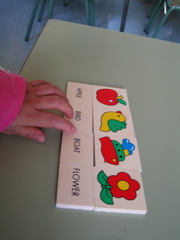
If anything, these two years working in the system have made the discrepancy between the Comunidad’s standards for the program and the reality within the school more than apparent. Another of the big problems I witnessed in my school was that teachers taught the same children in both English and Spanish. This confuses the children about what language to use. When a class in English rolls around, they need to know that they can’t speak Spanish–the teacher and the assistant only speak English. At least in the case of my school, this appeared to be a logistical impossibility. The teachers who taught English as part of the bilingual project also taught Spanish language and Math to their respective homerooms.
Teacher training for the bilingual project consists largely of taking a four-month long English course at the British Council and then going to England to live and study for four weeks in the summer all on the Comunidad’s dime. This does not make teachers bilingual. In most cases, the teachers in the bilingual project are motivated and enthusiastic, but still not perfect English teachers.
This is where the auxiliar steps in: to be the native speaker, the usage and pronunciation expert, and the ambassador of another culture. That’s all fine and dandy, but those teachers who we are assigned to help need to know how to use us, about how to get the most out of having a young, eager English speaker in the class. I firmly believe that the teachers need to receive a lengthy training on this, and attend training sessions with their auxiliares (we go to three sessions per academic year) to learn how to work together. Some teachers do better at this than others, but in general they all need to have a clearer understanding that the classes should be a true collaborative effort, using each instructor’s strengths to create an effective English-speaking classroom.
Finally, everyone needs to understand that creating a bilingual program takes time. The program isn’t truly “bilingual” yet, especially with the way some teachers teach. Though my kids know that I only speak English with them, they still speak to me mostly in Spanish, aside from a few key phrases like, “Can I go to the toilet, please?” and “Can I sharpen my pencil?” You hear a lot of Spanglish from the kids: “Tengo three!” and “Me das el blue?” They understand me nearly perfectly, but I frequently have to remind them to speak in English back to me.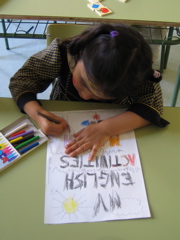
That said, my kids have learned tons of English in the last two years. By the end of last year, the kindergarteners could recite the book Brown Bear, Brown Bear, What Do You See? by heart. The first graders presented a (very brief) dramatization of “Little Red Riding Hood.” We made brownies (in English) during Cultural Week. This year the second graders prepared for the Trinity exams and, in doing so, started speaking more English. The highlight of the year was undoubtedly preparing for the musical the first and second graders performed, “The Wackadoo Zoo.” Though we didn’t win a top prize at the school theater competition we entered, we won 1,100 euros for the school. English has become a reality for them in many ways.
The Trinity exams are one of the ways the Comunidad like to boast about its successes with the bilingual project. These are 6- or 7-minute interviews conducted at varying levels by a British examiner. Questions range from “Where are you from?” to “What does your Dad do?” and “What do you do when you get up in the morning?” The Comunidad requires both second graders and sixth graders to take the exam, and by comparing the results (the younger children have a much higher rate of passing than the older), they demonstrate how the bilingual project has succeeded in getting these children to speak and understand English. And it’s true: the sixth graders, who have only had English as a Foreign Language several hours per week, know a lot less than the little ones.
In the end, we all know that the children who participate in the bilingual project are getting plenty of exposure to English, which is a fundamental step in mastering a language. The program may have a long way to go, but in some ways, the basics are there. Now we just have to fine tune everything.

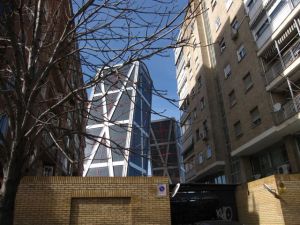 We got out of there pretty quickly and hustled back down to Lavapiés (1h 30m) to have some cañas.
We got out of there pretty quickly and hustled back down to Lavapiés (1h 30m) to have some cañas.

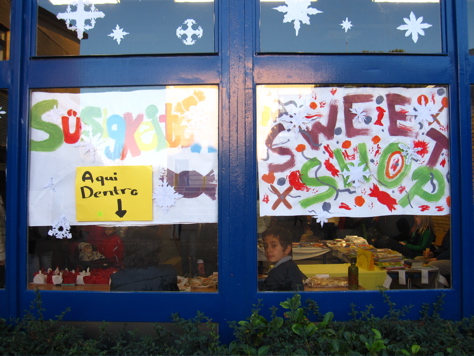



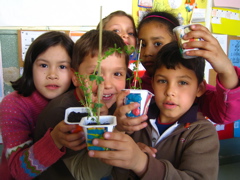
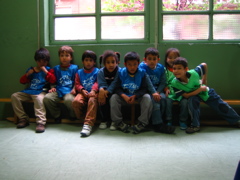
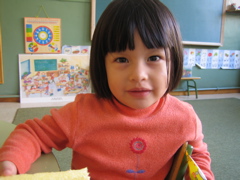









Recent Comments